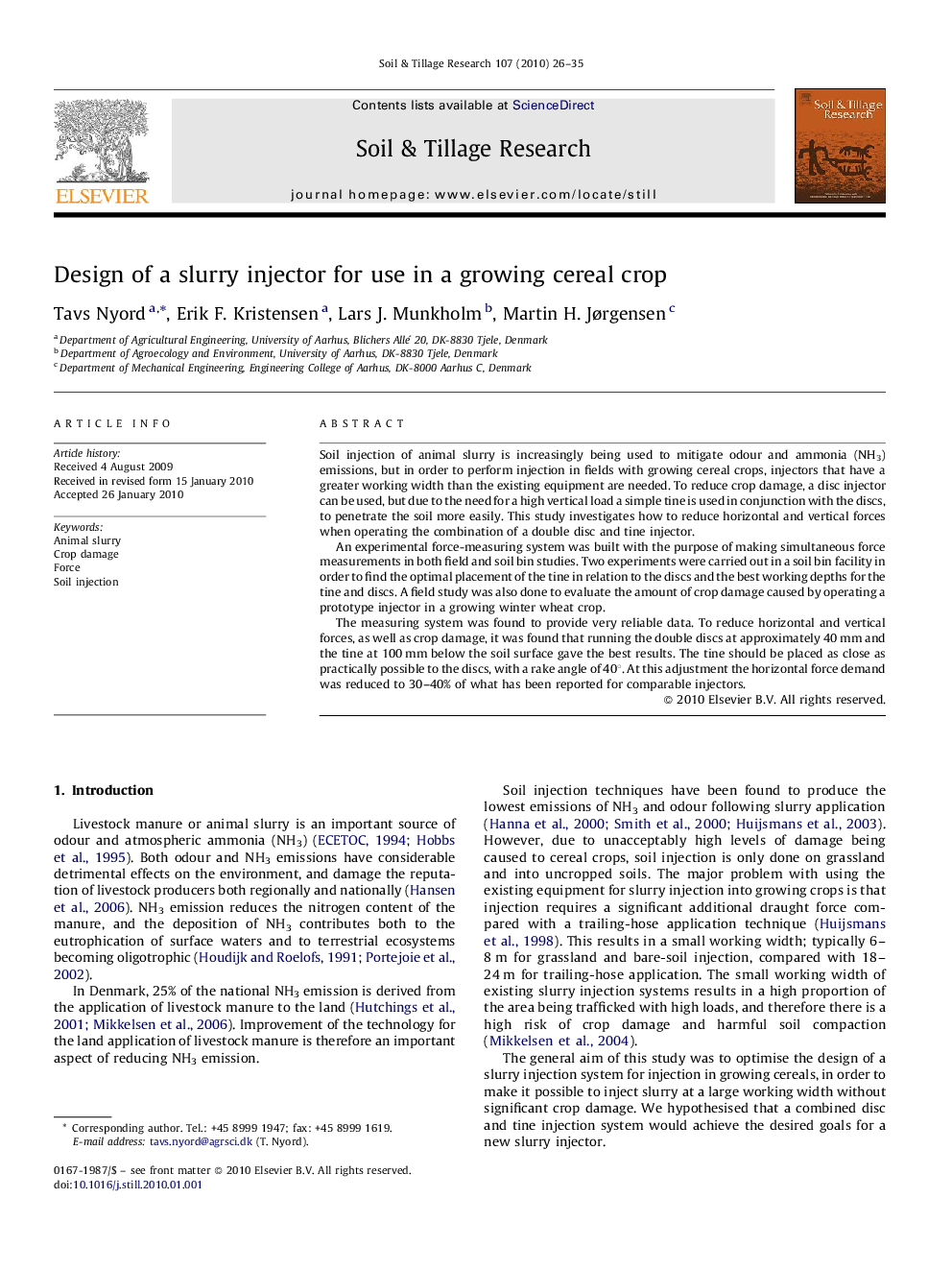| Article ID | Journal | Published Year | Pages | File Type |
|---|---|---|---|---|
| 306200 | Soil and Tillage Research | 2010 | 10 Pages |
Soil injection of animal slurry is increasingly being used to mitigate odour and ammonia (NH3) emissions, but in order to perform injection in fields with growing cereal crops, injectors that have a greater working width than the existing equipment are needed. To reduce crop damage, a disc injector can be used, but due to the need for a high vertical load a simple tine is used in conjunction with the discs, to penetrate the soil more easily. This study investigates how to reduce horizontal and vertical forces when operating the combination of a double disc and tine injector.An experimental force-measuring system was built with the purpose of making simultaneous force measurements in both field and soil bin studies. Two experiments were carried out in a soil bin facility in order to find the optimal placement of the tine in relation to the discs and the best working depths for the tine and discs. A field study was also done to evaluate the amount of crop damage caused by operating a prototype injector in a growing winter wheat crop.The measuring system was found to provide very reliable data. To reduce horizontal and vertical forces, as well as crop damage, it was found that running the double discs at approximately 40 mm and the tine at 100 mm below the soil surface gave the best results. The tine should be placed as close as practically possible to the discs, with a rake angle of 40°. At this adjustment the horizontal force demand was reduced to 30–40% of what has been reported for comparable injectors.
